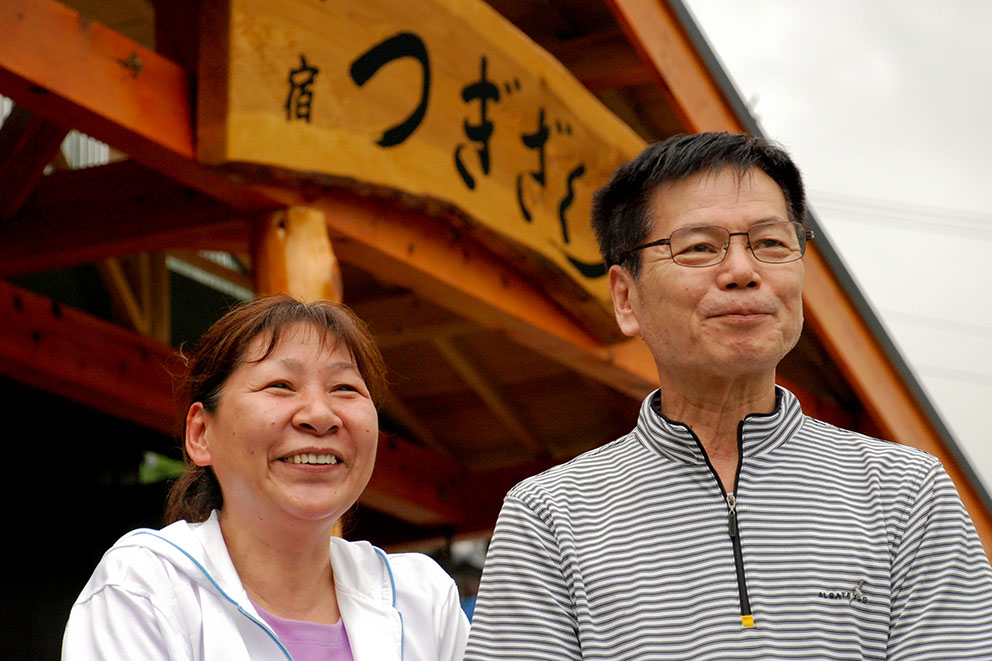Interview of Brad Towle for the Japan Ministry of Foreign Affairs
Sacred Kumano
Kumano is the sacred heartland of Japan, the rugged southern region of the Kii Peninsula on the main island of Japan. Its spiritual roots are closely linked to ancient nature worship of dramatic waterfalls, impressive megaliths, and awe-inspiring landscapes. In Japanese mythology it is the Land of the Dead, a sacred conduit between this world and the other-world where spirits congregate. In fact, even the deities have their graves here, such as Izanami-no-Mikoto, the female creative figure who died giving birth to the god of fire.
When Buddhism arrived in the 6th century it mixed and merged with the local belief systems inspiring a syncretic faith. Pilgrims were drawn to a divine trilogy of isolated shrines called the Kumano Sanzan using a network of pilgrimage routes that crisscrossed the peninsula—known today as the Kumano Kodo.
In 2004 these sacred sites and pilgrims’ trails were registered as UNESCO World Heritage in the property “Sacred Sites and Pilgrimage Routes in the Kii Mountain Range”.
For modern day pilgrims the area offers off-the-beaten path experiences. The sparsely populated mountain settlements offer a glimpse into the past, a chance for visitors to truly immersive themselves into the rural culture. A diversity of Onsen soothes mind and body after a day of exploring. And dining on delicious, fresh local cuisine soothes the appetite too! The rural hospitality and kindness of the people are world-class.
For the Japanese it is a touchstone for the origins of Japanese faith, as well as a bastion of rural landscape reminiscent of times past. Kumano is a universal sacred site more about feeling that dogma and is a great place for an adventurous open-minded traveler.
Into the Wild
It was this context in the summer of 1999 that I was thrown into as a new graduate from my Canadian university, participating in the JET Program assigned to the Hongu village Board of Education to teach English and engage in culture exchange. It took me many years to get to grips with the history and culture of the area—first trying to learn Japanese! There was no information in English about the spiritual and cultural significance of the area, but the people were so kind, open and accepting of me—even after my constant cultural missteps and comical errors! But I felt that there was something different, I couldn’t explain it, but it really stuck with me unconsciously.
Back Home & Around
After my three year contract expired I sadly had to leave and moved back to Canada where I built on my love of the outdoors and found employment in the Rocky Mountains as a hiking guide for Japanese visitors in the summer, and worked in the ski industry in the winter. In the off season I spent time in the Himalayas and returning to visit friends in Wakayama.
New Community Challenge
During this time the Kumano region was going through a series of large fundamental changes including the registration of UNESCO World Heritage and government mergers of villages and cities. The small village of Hongu subsequently joined with Tanabe City. I was contacted by my previous supervisor in Hongu who invited me to work for their newly created Tourism Bureau.
13 years later I am still working for the same organization that we founded. My job is diverse, including supporting locals to revision the area focusing on developing quality tourism infrastructure for international visitors, and promoting the region. It is greatly motivating to be able to give back to the community that was so kind and helpful to me.
Promotion Positive Moment
One of our main projects is a joint promotion project with Santiago de Compostela in Spain, the site of another major pilgrimage network called the Way of St.James. We work together to cooperatively promote World Heritage pilgrimage cultural including our Dual Pilgrim program. It is personally very rewarding to be able to link two very different religious faiths in a positive way.
Development Positive Moment
We work very closely with stakeholders in the region to create useful and functional systems, forming a solid base for local business owners and entrepreneurs to open their products and services to a wider, global market. It has been successful with a large increase in tourists, but more importantly a smooth transition for the local people to enjoy having many visitors from overseas without the stress of trying to do everything themselves. When someone in the community says thank you to me, I am always moved with reciprocal gratitude.
Challenges
Working with diverse groups of people, associations, and levels of governments is a real challenge to get a consistent, long-term, holistic vision or stance for the region. It is an ongoing process to keep communication lines open and exchanging information to adapt to the constantly changing dynamic of international tourism.
Into the Future
We hope that we will be able to continue to refine our models and systems, and work with neighboring municipalities and prefectures to expand the opportunities for regional regeneration and quality local tourism development. Rural Japan has amazing cultural traditions and much potential, it is just a matter of giving the local people some control, responsible, and the tools and skills to take care of their communities. We hope that our small association with our big dreams offer a hint for what is possible elsewhere in Japan.
Brad Towle
International Tourism Promotion and Development Director
Tanabe City Kumano Tourism Bureau

